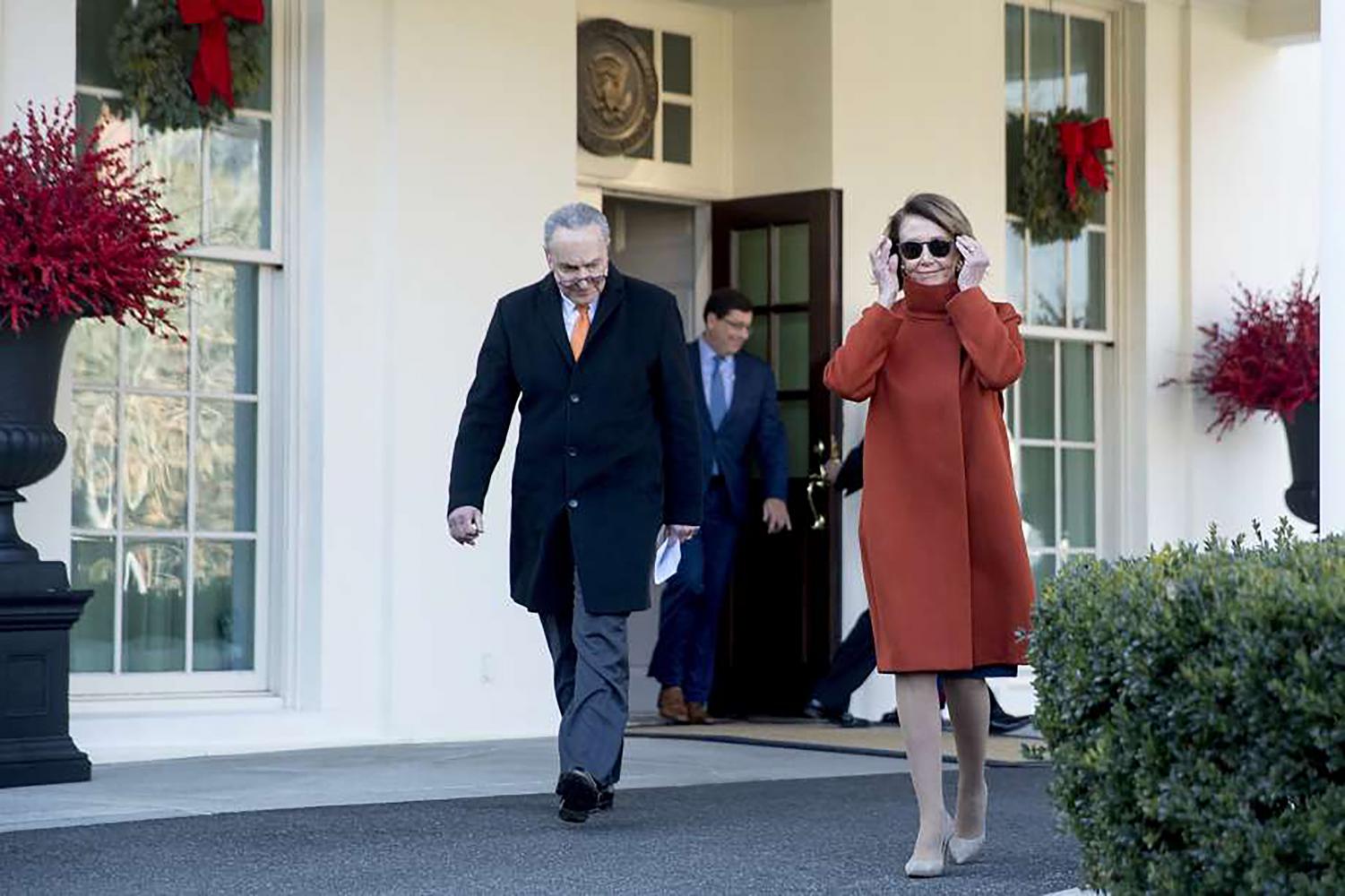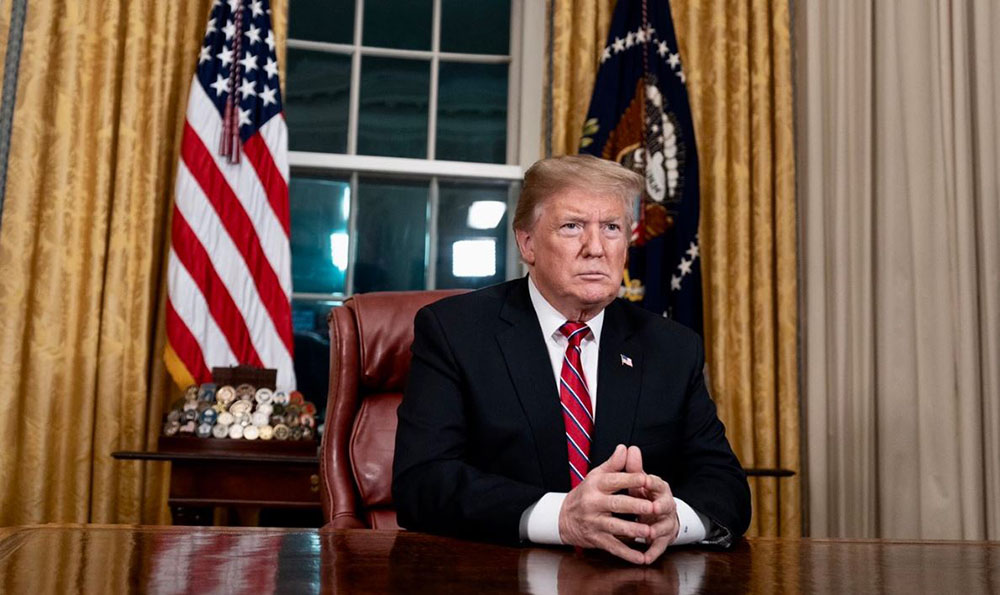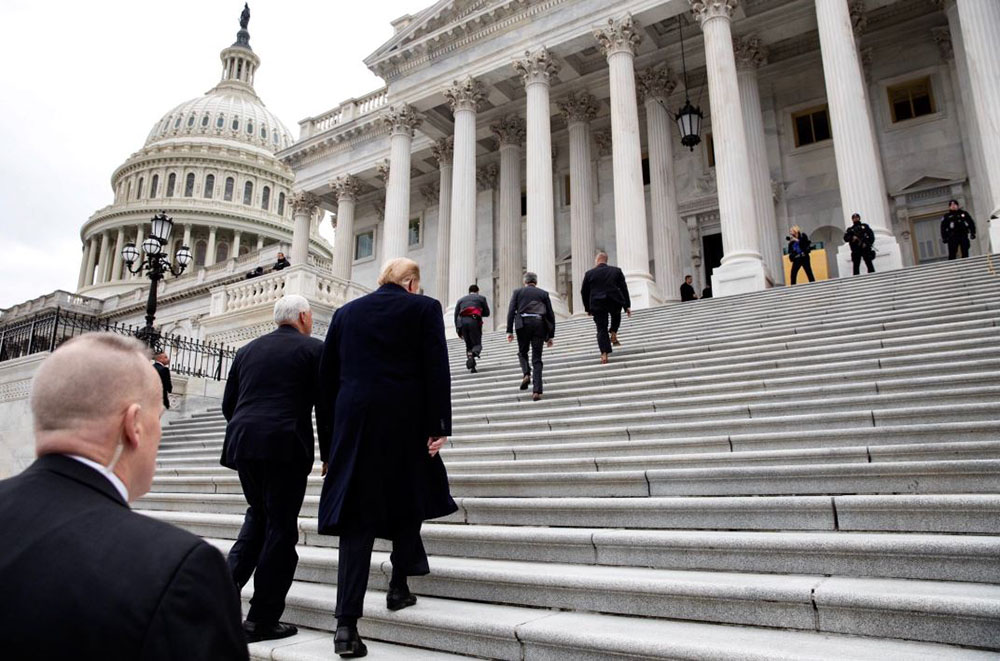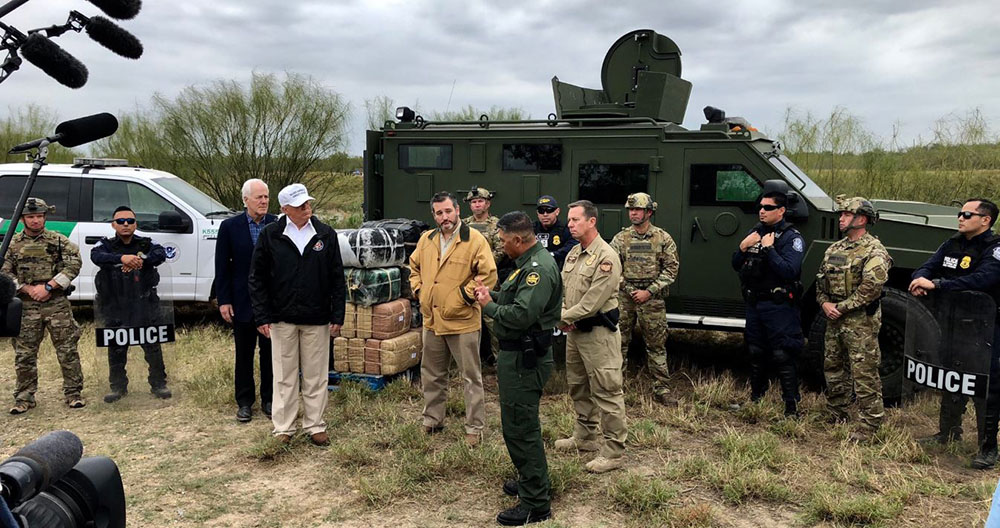Government Shutdown Timeline
January 11, 2019
December 6: Congress passed a short-term funding bill to delay a shutdown occurring until after former President George H.W. Bush’s funeral.
December 11: President Trump and Vice President Pence met with then House Minority Leader Pelosi (D-CA) and Senate Minority Leader Schumer (D-NY) to discuss government funding in the Oval Office. President Trump demanded $5 billion for the wall, but the Democratic leaders offered only $1.6 billion.

December 19: The Senate passed a short-term spending bill that would keep the government open until February 9, but it does not include border wall funding. President Trump initially supported this bill.
December 20: President Trump changed his mind and no longer supports the Senate-passed spending bill. The House of Representatives passed a short-term spending bill that includes border wall funding.
December 21: The Senate failed to pass the short-term spending bill that includes the border wall funding.
December 22: Senate Majority Leader McConnell announced that no deal will be made, so the Senate adjourns until December 27.
Shutdown Begins midnight EST on Saturday, December 22
January 2: Congressional leaders from both parties met with President Trump and administrative officials to discuss ending the government shutdown.
January 3: The Democratic Party retakes control of the House of Representatives, with Nancy Pelosi being elected Speaker of the House. The House of Representatives then passed a short-term spending bill that Republican leaders in the Senate rejected.
January 4: Congressional leaders met with President Trump, where President Trump stated that the government could be shut down for months or years.
January 5: President Trump stated that he could declare a national emergency to get funding for the border wall.
January 8: President Trump spoke to the nation in an Oval Office Address. President Trump spoke about the need for increased border security, specifically a a border wall. Speaker of the House Pelosi and Senate Minority Leader responded to the President’s address directly after he spoke. They conveyed a message of not supporting a border wall, but to re-open up the government and debate the issue of immigration separately.

January 9: President Trump began the day meeting with Republican leaders on Capitol Hill. Later, President Trump met with a bipartisan group of congressional leaders to discuss ending the government shutdown. President Trump passed out candy, but the meeting ended abruptly after Speaker Pelosi says that she would never support funding for the wall.

January 10: President Trump traveled to McAllen, Texas with Senator Ted Cruz (R-TX) and Senator John Cornyn (R-TX), where he visited the border and met with border patrol agents, as well as the brother of officer Ronil Singh who was murdered by an illegal alien on December 26, 2018.

January 11: The shutdown ties the record for the longest shutdown of the modern era.
January 16: Speaker of the House Nancy Pelosi sent a letter to President Trump asking him to delay his State of the Union Address that is scheduled for January 29, 2018. Pelosi cited the government shutdown as a reason to delay the Address because of a lack of funding for security agents. Secretary of Homeland Security Kristjen Nielsen replied with a tweet saying that her letter to the President was incorrect and the Department and U.S. Secret Service are fully prepared for the event.
January 17: President Trump released a statement that canceled Speaker Pelosi’s overseas trip with a Congressional delegation citing the government shutdown.
January 19: President Trump outlined a proposal to end the government shutdown. Senate Minority leader Schumer responded to the proposal saying, “It was President Trump who single-handedly took away DACA and TPS protections in the first place—offering some protections back in exchange for the wall is not a compromise but more hostage taking.”
January 23: The House of Representatives passed 3 bills: Funding the federal government through February 28, without money for a border wall (229-184), funding most of the federal government through September 30, without money for a border wall (234-180), and funding the Department of Homeland Security through February 28, without money for a border wall (231-180).
January 25: President Trump delivered a Rose Garden speech in which he announced his support for a short-term spending bill to re-open the government until February 15. The shutdown lasted 35 days – a new record.

